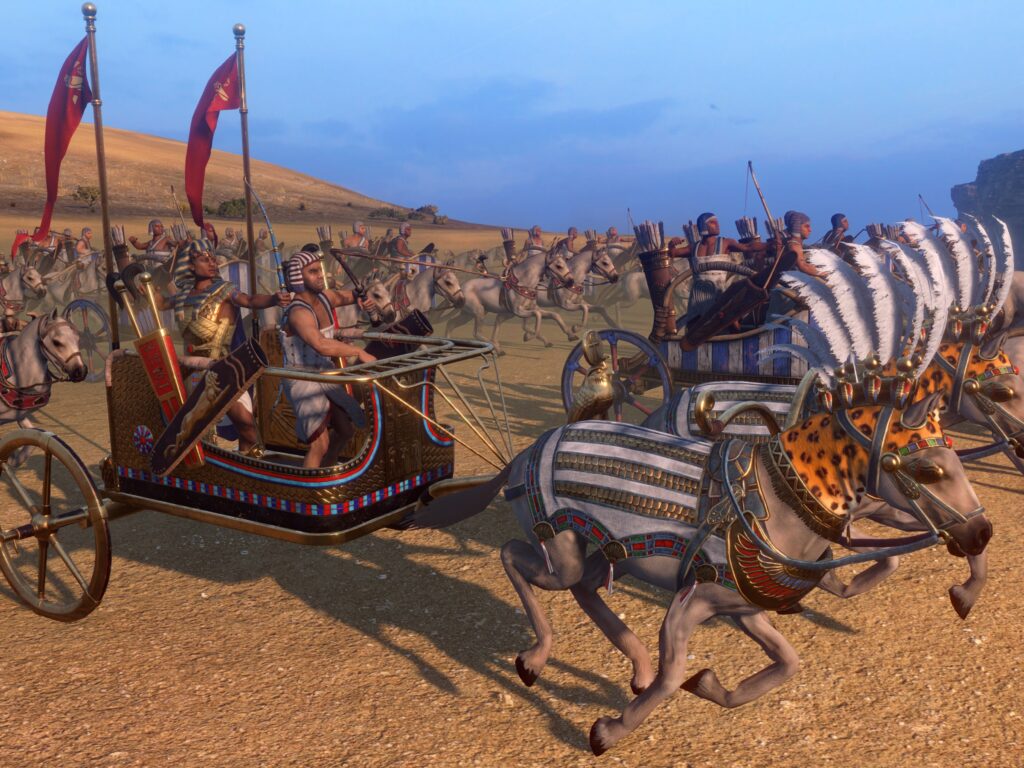From Chariots to Cavalry: Evolution of Ancient Battle Tactics
Throughout history, warfare has constantly evolved, with new tactics and technologies being developed to gain an advantage on the battlefield. One significant development was the transition from chariot-based warfare to the use of cavalry.
Chariots were an early and effective means of transportation and warfare, providing a mobile platform for armed combat. However, as civilizations developed, the use of cavalry gradually replaced chariots as the dominant force on the battlefield. This transition was driven by advances in horse breeding and horsemanship, changes in tactics, and the evolving nature of warfare.
The rise of cavalry had a significant impact on ancient warfare, contributing to the development of new tactics and formations and shaping modern military strategies. The transition from chariots to cavalry represents a pivotal moment in the history of warfare.
From Chariots to Cavalry: Evolution of Ancient Battle Tactics
Throughout history, warfare has been an ever-evolving art form, with new tactics and technologies constantly being developed to gain an advantage on the battlefield. One of the most significant developments in ancient warfare was the transition from chariot-based warfare to the use of cavalry.
The Role of Chariots in Ancient Warfare
Chariots were one of the earliest and most effective means of transportation and warfare in ancient times. They were typically drawn by two horses and manned by a driver and a warrior, who would use bows, spears, or other weapons to attack enemy forces. Chariots provided a mobile platform for armed combat, allowing for rapid movement and the ability to strike with precision and speed.
The Rise of Cavalry
As civilizations developed and warfare evolved, the use of cavalry gradually replaced chariots as the dominant force on the battlefield. Cavalry consisted of mounted warriors, typically armed with spears, swords, and other weapons, who could move swiftly and strike with the advantage of height and mobility. The transition to cavalry was driven by a number of factors, including changes in military technology, tactics, and the nature of warfare itself.
Military Technology
Advances in horse breeding and horsemanship made it possible for cavalry to become a more effective and efficient fighting force. The development of stirrups, for example, allowed warriors to ride more securely and maneuver with greater control, enabling them to engage in more advanced tactics and maneuvers. The use of more powerful and versatile weapons, such as the stirrup, also contributed to the rise of cavalry as the dominant force on the battlefield.
Changes in Tactics
As warfare became more fluid and dynamic, the role of cavalry became increasingly important. Cavalry units were able to move quickly and effectively across the battlefield, making them ideal for scouting, flanking maneuvers, and hit-and-run attacks. The increased mobility and adaptability of cavalry made them a formidable force, capable of outmaneuvering and outflanking enemy forces.
The Nature of Warfare
As warfare evolved from large-scale, set-piece battles to more fluid and dynamic conflicts, the role of cavalry became increasingly important. The ability to move swiftly and strike with precision gave cavalry an advantage in a variety of combat scenarios, from skirmishes and raids to large-scale battles. The flexibility and adaptability of cavalry made them a vital component of ancient military strategies.
Impact of the Transition to Cavalry
The transition from chariots to cavalry had a significant impact on ancient warfare. Cavalry became a dominant force on the battlefield, with the ability to outmaneuver and outflank enemy forces, making them an essential part of ancient military strategies. The rise of cavalry also contributed to the development of new tactics and formations, such as the famous Greek phalanx and the Roman legion, which utilized cavalry alongside infantry to create a more dynamic and effective fighting force.
Conclusion
The transition from chariots to cavalry represents a significant evolution in ancient warfare, with cavalry becoming a dominant force on the battlefield. The development of advanced military technology, changes in tactics, and the nature of warfare itself all contributed to the rise of cavalry as the primary fighting force in ancient warfare. The impact of this transition can still be seen in modern military tactics and strategies, making it a pivotal moment in the history of warfare.
